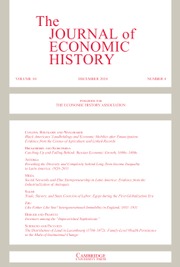Mission Economy strives to convince the reader that governments can deliver on ambitious outcomes with the right approach. Mazzucato sees a mission orientated approach as a real opportunity for governments to lead in solving the economic, environmental, and social challenges we face today. Her breadth of experience working closely with policy makers shines through. She writes beautifully about the history of moonshots and presents many facts that readers interested in government’s role in innovation should know.
The Space Race is the canonical example of mission-oriented research and development spending. Many see important technological and economic spillovers flowing from National Aeronautics and Space Administration (NASA) moonshot as making the case for mission orientated public research and development. President Barack Obama, in his 2011 State of the Union, captured this well, “Half a century ago, when the Soviets beat us into space with the launch of a satellite called Sputnik, we had no idea how we’d beat them to the moon, the science wasn’t there yet. NASA didn’t even exist. But after investing in better research and education, we didn’t just surpass the Soviets—we unleashed a wave of innovation that created new industries and millions of new jobs.” Mission Economy fits squarely in this camp.
Mazzucato first takes the reader back to the original moonshot. She describes how President Kennedy announced in the early 1960s that the U.S. government would send a man to the moon and return them safely to earth before the decade was out. The success of the Apollo mission in 1969 remains a high point of human achievement. It was not easy. The United States was nowhere close to having the technological capability to immediately fulfill the mission upon Kennedy’s announcement. A massive investment in space technology was required. NASA’s budget grew accordingly, to a peak of $5.933 billion (4.4 percent of the federal budget) in 1966. Mazzucato puts the total cost of the Apollo program at $283 billion 2020 dollars. She notes how policy makers would shy away from such sums today, “What a contrast with how, today, we hear about costs of our public services – and the implication on annual deficits and debt – not the ambition or the grand outcomes they are trying to achieve” (Mazzucato, p. 4).
Mazzucato is on point in her discussion of the Moonshot’s grand outcomes and grand costs. She treads into shakier ground on the mission’s spillover effects to the broader economy. She highlights a number of high profile innovations where NASA played a role. That the technology needed to process data in real time inside the lunar module’s small computer is a part of NASA’s technological legacy is undoubtedly true. But how important was NASA in advancing technology more broadly? Surveys of space scientists right after the space race suggest NASA’s contribution was more modest. Robbins, Kelly, and Elliot (1972) interviewed 161 recognized technological leaders to identify 109 major developments in a field’s technology during the decade prior to the Moon landing. For each breakthrough they classify NASA’s role in the technology’s development: (1) an entirely new technology—6.3 percent of developments, (2) an incremental advance in a technology—64.8 percent of developments, or (3) a consolidation of existing knowledge about a technology—23.3 percent of developments. Solid economic evidence on the importance or even existence spillovers from mission orientated R&D is sorely lacking (Bloom, Van Reenen, and Williams 2019). We just do not know if mission led growth is more a myth or a reality.
This lack of evidence leads Mission Economy to become less successful as it becomes more perspective. The challenges highlighted are real—growing income inequality, global warming, biodiversity lost, the pandemic—but aren’t we jumping the gun by saying a mission-based program is the solution? Even more so, since many of the challenges discussed are social or economic, how applicable is a mission-based approach that has cut its teeth solving technological challenges? Mazzucato is clear how hard these challenges are and that a mission-based approach is not a panacea. Yet, a skeptical reader is left wondering if we have not put the cart before the horse delivering policy prescriptions without a solid evidence base.
The haphazard categorization of ideas in “Bad Theory, Bad Practice” and “Good Theory, Good Practice” buckets without connecting to findings in the literature is a distraction from the much stronger contributions of Mission Economy. Few economics of innovation scholars would argue that only the private sector can create value, for example. Empirical economists have known for decades that basic research conducted by government and applied research conducted by the private sector can be complements. Yet, Mazzucato sees this as a “myth” in need of squashing.
There is much to like in this original and well written book. Mazzucato’s discussion of the original Moonshot is careful, engaging, and gets much right. How applicable lessons from past mission-based policies are to today’s policy choices an open question. With Cold War era data becoming increasing accessible it is an exciting time for economic historians to make progress understanding what actually happened to share with today’s leaders.


